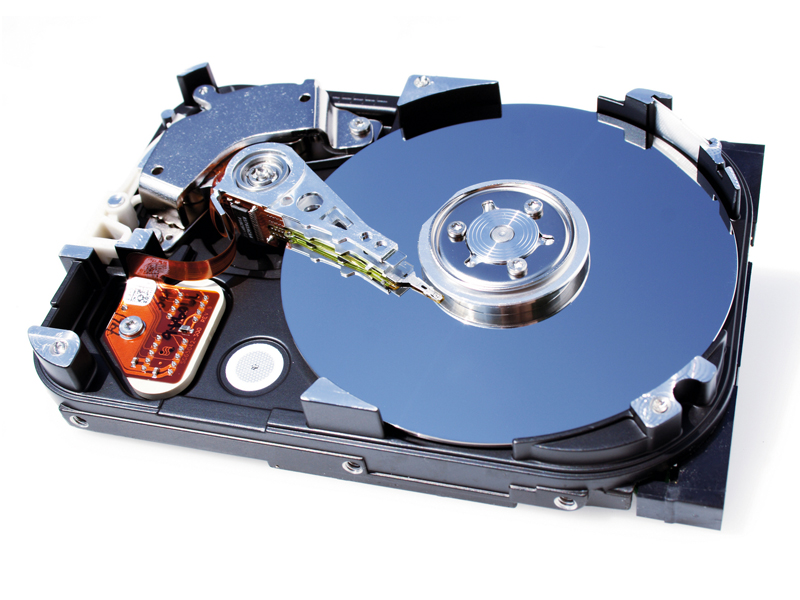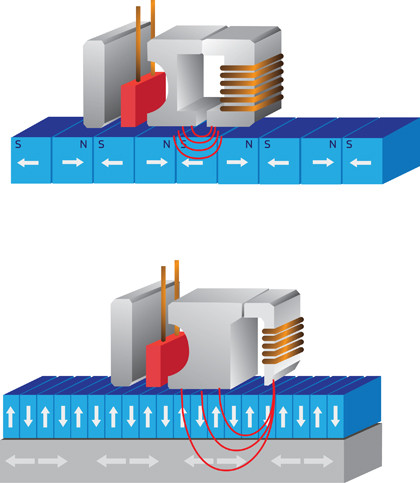The future of the hard drive revealed
New tech that promises to make a 2TB hard drive look tiny

All the recent fuss about solid state storage might make you think that the traditional hard drive is not long for this world. Capacities have increased, but the basic design is still recognisable from the very first IBM RAMAC drive, introduced in 1956, albeit in a considerably smaller form.
Surely the future of storage can't be based on something so primitive? Think again, because nothing comes close to a traditional hard drive for storing the ever increasing amount of data the modern world produces.
And while the physical limits of current hard drive technology are rapidly being reached in terms of the number of bits that can be stored within an inch square of platter, it won't be too long before a two terabyte drive looks like a floppy disk to us today.
That's thanks to a new way of getting information on and off of a platter called, excitingly, 'heat assisted'.
The basics of a traditional hard drive are quite simple. Data is stored on circular platters made from a glass and ceramic mix, sometimes aluminium, and coated in a thin layer of magnetic material made of varying mixtures of cobalt, chromium, tantalum, nickel and platinum on the top and bottom.
In a desktop drive, these platters spin at 7,200rpm. That rises to 15,000rpm for a top performance server drive and drops to 5,400rpm for general laptop storage. It means the outer edge of a platter is moving at around 67mph while the drive in use.
Both sides are recordable, so for high capacity drives, read/write heads are sandwiched between platter layers with one head for each surface. These heads contain three elements: two magnetic coils for reading and writing data to the platter, and one air bearing, which helps the head maintain a steady distance of just a few nanometers above the disk surface.
Get daily insight, inspiration and deals in your inbox
Sign up for breaking news, reviews, opinion, top tech deals, and more.
Hard Drives just keep getting bigger. Seagate has just announced a family of drives that can fit a full 1TB of data on each platter, which is 625GB per square inch. It's reckoned that drive capacities have doubled every 24 months or so over the last 60 years.
Now and then

At the moment, drives work using a technique called 'perpendicular magnetic recording' (PMR). The recording layer on a platter surface is filled with tiny molecular particles called 'grains'. A single bit of data takes around 100 grains to store securely, and the trick to increasing capacity is to cram more of these grains into a smaller space.
In a PMR disk, grains are arranged at right angles to the platter surface, so they're standing up. Previously, in 'longitudinal magnetic recording' they were arranged end to end horizontally. It stands to reason that you can squeeze more in with the newer technology, which has been commonplace for the last five years.
Physical limits
The problem that has always dogged hard drive manufacturers is that there are physical limits to the number of particles you can fit into a square inch before grains begin to randomly flip their charge and destroy data. PMR is already getting close to those limits.
In order to carry on increasing capacity at historical rates, something completely new is required. That something is looking increasingly likely to be 'heat assisted magnetic recording', or HAMR for short.
A steering committee called the Advanced Technology Consortium was recently set up by the International Disc Drive Equipment and Materials Association, which includes representatives from all the hard drive manufacturers, to produce a common roadmap for the shift to HAMR technology.
This has a strong precedent, thanks to a similar initiative to help transition hard drives from the decades-old method of laying down information on a hard drive in 512 byte logical sectors to a larger, more efficient 4kb technique. That transition was finally completed this year, so hopefully the next goal will be met just as smoothly.
But what is HAMR? Basically, researchers discovered several years ago that heating up a magnetic surface prior to writing information to it can increase the accuracy and efficiency of write heads astronomically, while cooling them down improves the ability of a read head to take that data back.
The future involves a small and highly focused laser, mounted on the drive head, which heats up the area of the platter about to be written to. This area then rapidly cools down as the drive spins ready for long-term storage and reading operations.
There are a few details to be sorted out, such as whether a laser point is better at two or ten nanometers, that kind of thing, but ultimately it should lead to drives capable of cramming ten times as much data into the same amount of space that they use today - and at little extra cost.
Tech demos
We spoke to Rich Rutledge, Vice-President of storage giant, Western Digital, about this new HAMR technology and how it's being implemented right now.
"We've all [hard drive manufacturers] done demos of the technology that have demonstrated functionality, but we haven't quite crossed over in terms of technology yet," he said.
So it is up and running, but at the moment it's not ready to be simply dropped into the sort of hard drives we've got backing up our media libraries at home.
"We're able to use last year's technology with heat assisted. What we're not able to do yet is next year's technology with heat assisted," says Rutledge.
But hopefully the technology isn't too far off. The first drives to use actual heat-assisted write heads could be here within the next two years.